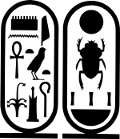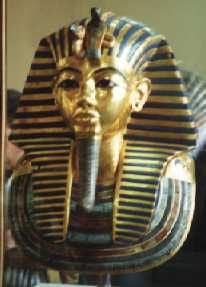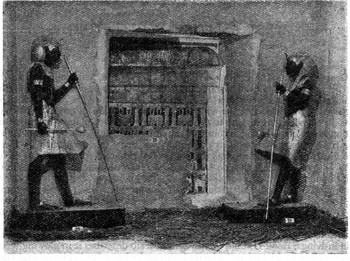King Tut: Egypt's Famed Boy King
Tutankhamen was one of Ancient Egypt's lesser-known pharaohs for a very long time. The discovery of his gold-laden tomb, however, made him famous in modern times. 
Born in 1343 B.C., he was the son of the famous Akhenaten and took the throne just a couple of years after his father died, after two other kings had died, having served a short amount of time. Tutankhamen was just 9 in 1334 B.C. when he became king, and he was called "the Boy King." His name at birth was Tutankhaten, meaning "the living image of Aten." Aten was the sun god, and Akhenaten had proclaimed that Aten was the sole god to be worshiped, through the king as high priest. Akhenaten also ordered built a new royal capital, Akhetaten, also known as Amarna. Akhenaten's religious revolution made him very unpopular with the priests of the many temples of Amen, who resented the loss of their influence. When Akhenaten died, the young Tutankhaten changed his name to Tutankhamen, which means "the living image of Amen." He also moved the royal capital back to Thebes, where it had been for many years, ordering rebuilt some of the temples to Amen that his father had ordered pulled down. He also became the latest pharaoh to add to the construction at the enormous temple complex at Karnak. 
Because Tutankhamen was so young, he had adults making some of the decisions of government for him, at least for the first few years of his reign. One of those men was Ay, who served as Grand Vizier, or top advisor. Another of his advisors was the head military commander, Horemheb, who would himself become pharaoh later. Even as young as he was, Tutankhamen fulfilled his royal duty and took a wife. Her name was Ankhesenamen, whose father was also Akhenaten. The royal couple had two daughters, neither of which survived long. During the reign of "King Tut," as he has come to be known, Egypt's armies fought against various neighbors, as often happened. Akhenaten had concentrated more on religious matters than on military matters, and the army was not as strong as needed when Horemheb led them against traditional antagonists like the Hittites. In fact, during this time, the Hittites destroyed one of Egypt's traditional allies, the Mittani. "Tut" himself, as the heir apparent, had undergone military training, and some sources say that he was a good shot with a bow and arrow. However, unlike the famed Ramses II, he did not lead his armies into battle. He died in 1325 B.C., after 10 years on the throne, in mysterious circumstances. He was 19. Since the discovery of his tomb in the Valley of the Kings in 1922 and, with it, his mummy, scientists have gone to great lengths to determine the cause of his death. For many years, historians believed that he was the victim of foul play. Some experts have concluded that epilepsy killed him. Some have argued that he died of natural causes. Officials in 2005 sanctioned a CT scan, which proved inconclusive. Another group of scientists who conducted DNA tests on his mummy, concluded that he died of malaria and a broken leg. No one theory has yet to be embraced by everyone. 
More famous, though, are the riches that were found in his tomb. Unlike the final resting places of many other pharaohs, the tomb of Tutankhamen still had a large amount of riches in it, including a golden sarcophagus and the famous gold mask that is so familiar to people today. The tomb was quite small, not the size befitting a king, and many historians, think that this was because he was on the throne for so little time; further, the theory goes, his tomb was finished in a hurry and a large amount of items crammed inside. Indeed, those who opened the tomb and catalogued the contents found more than 5,000 artifacts, including clothes, weapons, furnitures, chariots, and (one study concluded) a prototype of the modern camping bed. Tutankhamen was known to walk with a limp, and he had many walking sticks fashioned for him. A full 130 of these were found in his tomb. Egyptian officials have sent various items recovered from King Tut's tomb on exhibits around the world and have stored many of them in domestic museums. Officials have also opened the tomb to the public. Traffic around and through the tomb became so intense that in 2014, officials revealed a life-size replica of the tomb and closed the original saying that its walls were in danger of crumbling. |
|
Social Studies for Kids
copyright 2002–2024
David White




